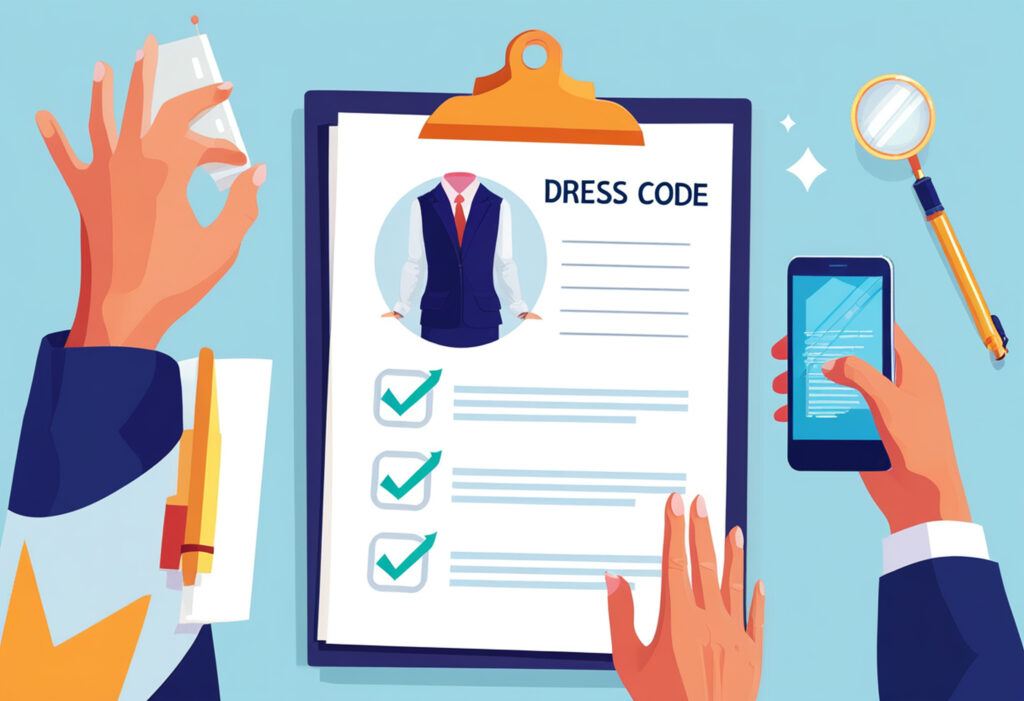 Earlier this year, a group of Starbucks employees filed a lawsuit when the company imposed a new dress code. The company requires baristas to wear sold black shirts with long or short sleeves (with or without collars); they must cover midriffs and armpits. They also have to wear khaki, black, or blue denim bottoms without patterns or frayed hems. Or they can wear solid black dresses not more than 4 inches above the knees. There are shoe, socks, and hosiery specifications.
Earlier this year, a group of Starbucks employees filed a lawsuit when the company imposed a new dress code. The company requires baristas to wear sold black shirts with long or short sleeves (with or without collars); they must cover midriffs and armpits. They also have to wear khaki, black, or blue denim bottoms without patterns or frayed hems. Or they can wear solid black dresses not more than 4 inches above the knees. There are shoe, socks, and hosiery specifications.
What triggered the lawsuit was the fact that employees have to pay for these items; there’s no company reimbursement. The employees allege this violates Colorado law.
What this lawsuit suggests to me is that companies may want to think about their dress codes: whether there should be company uniforms (where appropriate) or suggested attire, and who bears the cost of compliance.
Company dress codes
Companies may have policies imposing certain conditions on clothing at work. Policies vary from mere suggestions to strict uniforms. We don’t hear much about casual Fridays (a policy that started in the 1990s) anymore. Led by Silicon Valley, attire at many companies—T-shirts, hoodies, and sneakers—is always casual.
But some companies continue to impose standards:
- Nice office attire. Employees can be required by company policy to dress
“appropriately” to maintain the company image. What’s “appropriate” is not clearly defined, but is understood to mean clean and neat, and not overly revealing or distracting. As late as the 1980s, the IBM “uniform” for salesmen (there were no women for a long time although my friend—a woman—became the top salesperson there for 2 years in a row) was pin-striped suits, white button-down shirts, rep ties, and wing-tipped shoes. Things have changed! - Special outfits. The Starbucks policy referred to earlier fits here, requiring certain types of clothing. Construction workers need to wear steel-toe books, flame-resistant clothing, and often special gloves.
- Uniforms. The last time anyone took note, more than 32 million Americans had to wear uniforms at work. Uniforms in certain industries are standard. Airline pilots and flight attendants, scrubs for doctors and nurses in hospitals, branded shirts and hats for delivery drivers (UPS; FedEx: Amazon), and many others must wear company attire.
Who pays for employee compliance to company dress codes?
Should or must the employer pay for attire that’s required at work? It depends in part of federal and/or state law.
Federal law. Under the Fair Labor Standards Act (FLSA), an employer can require employees to wear uniforms, safety equipment, or specific clothing. But the cost of required items cannot effectively reduce the employee’s wages below the federal (or applicable state/local) minimum wage or cut into overtime pay. So, if an employee has to buy or pay for the clothing, the employer must ensure the employee still receives at least the minimum wage for all hours worked.
Where minimum wages are not an issue, if the clothing is adaptable for general use (e.g., black pants, white shirt), usually the employee can be required to purchase the clothing without reimbursement. If it’s a true uniform (e.g., branded shirt with logo, special protective gear), the employer often must provide it or reimburse costs.
State and local law. Check state and local law about who pays for required uniforms. Even though federal law does not require employers to pay for uniforms (assuming minimum wage isn’t involved), state law may impose an obligation on employers. For example, in Florida, the employer must provide and pay for uniforms; the employer must also pay maintenance for them if they can’t be washed with other clothing. Colorado law (what’s in contention in the Starbucks case) says no reimbursement is required for “ordinary street wear” BUT this non-payment exception may not apply if a special color is required. The court will decide the Starbucks matter.
Handling reimbursements
If you are required to reimburse employees for clothing or just want to do so, be sure you have an accountable plan (see Chapter 6). Reimbursements under an accountable plan are not taxable to employees and are exempt from payroll taxes; they’re still deductible by the employer. Keep in mind that employees may not deduct the cost of required clothing that they pay for.
Final thought
A couple of years ago I wrote a blog entitled “Are Dress Codes and Uniforms Dead?” I don’t think so. In 1975, author John T. Molloy’s book Dress for Success created the concept of “power dressing” and I think it continues to apply today.
Most employees want to dress in a way to engender respect and to get ahead in their jobs or careers. But even more importantly, from the company perspective clothing is an important part of a brand and may be crucial to employees’ safety.
Know what the law requires, think about what your policies should be, and be sure to communicate the policies to your employees (include them in your employee handbook).
You’ll find additional information about creating a company policy in this list of blogs here.


